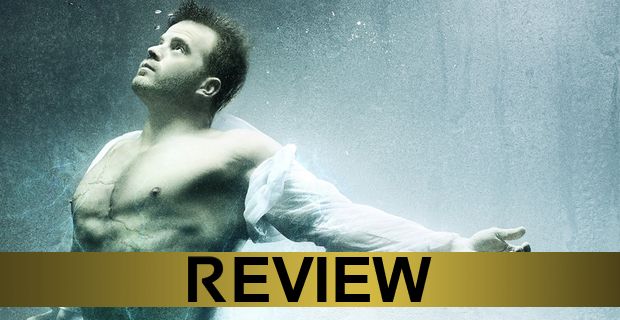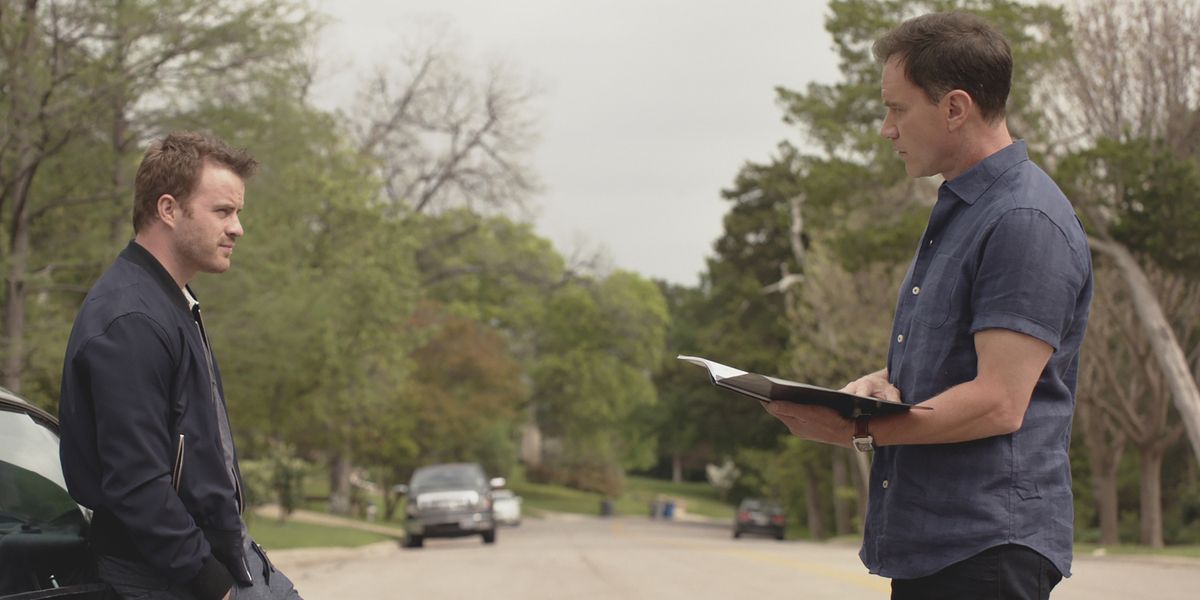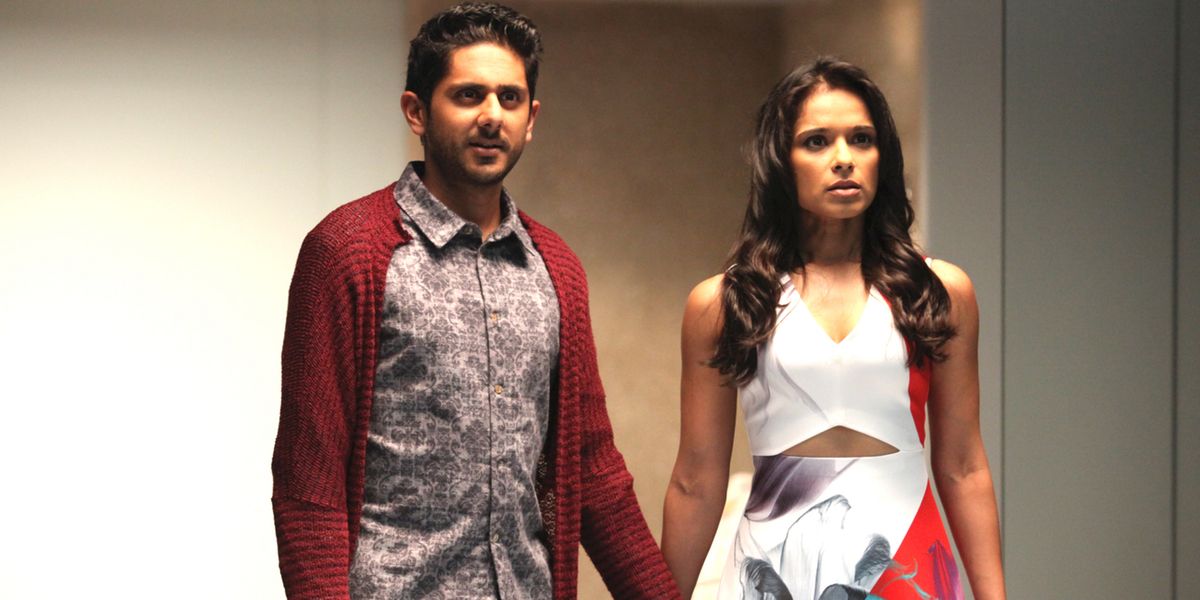[This is a review of Second Chance season 1, episode 1. There will be SPOILERS.]
-
The fall 2015 television season was marked with a number of new series vying for viewer eyeballs in an increasingly crowded marketplace. Though varied for the most part, many of the new shows seemed linked by a single common principle. That principle was to take a simple, potentially entertaining concept and add to it as many unnecessary elements as possible, as though the mere suggestion of more would somehow make the product more appealing. Like a restaurant chain that, instead of simply making a good burger, piles on extra toppings and condiments until the essence of the original product is buried under a mountain of increasingly indistinguishable scents, flavors, and textures, these series were solid concepts muddied by the excess of their execution.
If it seems too much to ask that 2016 be different with regard to its high-concept series piling the ideas like so much Jenga, then FOX's Frankencop drama Second Chance is an uninspired reminder of just how slowly the wheels of progress sometimes turn. The series comes from Rand Ravich, creator of NBC's short-lived pre-Homeland Damian Lewis drama Life, and last year's equally convoluted international state of emergency drama Crisis, which inexplicably starred Gillian Anderson, Jessica Jones' Rachael Taylor, and a bespectacled Dermot Mulroney basically recycling the kidnapping plot from Batman Returns.
Before its premiere, Second Chance went through several title iterations, beginning with the ultra-lame-but-at-least-semi-interesting The Frankenstein Code before shifting to the far more vague Lookinglass – which inadvertently suggested another literary inspiration for the silly series – and then finally settling on the more redemptive-sounding title it now bears. Title changes are easy to overlook, sometimes an adjustment in the first impression is precisely what a fledgling series needs. Some are strong enough to slough off the concerns of an awkward title, but not all series have what something like, say, Mr. Robot had lurking beneath its otherwise goofy banner. Here, though, the change from The Frankenstein Code to Lookinglass to Second Chance speaks to a larger concern, one that has to do with the question: What exactly is this show and does it even know?
The concept is simple: not so great guy and former sheriff Ray Pritchard (initially played by Philip Baker Hall) comes back from the dead with a new super-powered body and a second chance at life to, you know, maybe prove that there's something good in him after all. That's a fairly straightforward and familiar concept. And perhaps it was that fear of familiarity that drove Ravich to add layer upon layer to this story until even the most basic driving element was obscured. What the series eventually winds up being is a convoluted mess bound to too many thin characters and rules it's already itching to break.
Beyond the surly bourbon swilling, CCR-loving presence of Hall, Second Chance hinges its success on the mostly affable Robert Kazinsky, who some might recognize as the obnoxious Australian Jaeger pilot from Pacific Rim and the faerie-vampire Warlow from True Blood. But it also introduces twins Otto and Mary Goodwin (Adhir Kalyan and Dilshad Vadsaria, respectively), social media pioneers and proprietors of Lookinglass (which is apparently a Facebook analogue and magical plot hole-erasing device in this universe). Additionally, there is Pritchard's FBI agent son Duval (Tim DeKay) and granddaughter Gracie (Ciara Bravo). Oh, and there's also a slew of dirty cops, a lovable hooker, Mary's personal assistant (Vanessa Lengies), a maternal AI that sounds like Baymax, and Piers Morgan.
Pritchard (in Philip Baker Hall form) is an unrepentant sheriff who was disgraced after accusations of planting evidence got him bounced from the job. While scrounging around his son's house late one night in search of records, he stumbles upon Duval's crooked partner and winds up being tossed from a bridge in what looks like a suicide. Somehow, Otto acquires Pritchard's body and reanimates him – because of a one in ten million genetic variation – as a proof of concept that will somehow prevent Mary from succumbing to the cancer that is slowly killing her. There's the requisite cursory moral objection to "playing God," but mostly both twins are game for turning Hall into a beefy, super-potent Frankenstein with a wobbly American accent and sudden strong desire to reconnect with his son – apparently the alcoholic daughter is too much of a lost cause.
There is an extraordinary amount of moving pieces, most of which exist simply to get the plot moving. Without Otto and Mary there would be no need for Frankencop and without Lookinglass there would be no technology to create him in the first place. But once Frankencop is up and walking around, smashing through walls and windows, chasing women and stealing the suits off drug dealers there's really no need for Otto or Mary, so Second Chance has to create a reason for their continued involvement. In addition to Mary needing him to live, the show cooks up something about his body rejecting… uh, his body, which means he has to float in a tank every 12 hours or he dies (again). This is pretty much how the rest of the pilot episode works: as a series of justifications for the continued existence of the layers that were added just to set the plot in motion.
What's so unfulfilling about Second Chance isn't that it overly complicates a standard story of redemption with mounds of hackneyed science fiction hokum, but that it fails to distinguish itself as a unique delivery system of said sci-fi hooey. All the flashy elements add nothing to the product; they simply cover up the dullness of it all with short bursts of slightly more precise banality. The one saving grace might have been seeing Kazinsky try and maintain a solid Philip Baker Hall impression for the length of each and every episode, but even he stops trying after about 90 seconds of being reanimated. That's one of the risks a series like this takes in casting a well-known actor who distinguishes himself from the first moment he appears onscreen. From the second he's gone, the show is tasked with convincing the audience this other person – who does not look, sound, or move at all like him – is also that person.
Convincing the audience is what Second Chance spends too much of its time doing when it should be engaging with them. The series is so busy asking whether or not people will buy its silly premise it never bothers to ask whether or not they'll care enough to give it a second chance.
-
Second Chance continues next Wednesday with 'One More Notch' @9pm on FOX.
Photos: Bill Matlock/FOX



